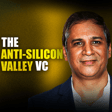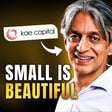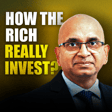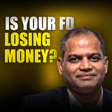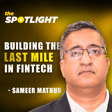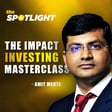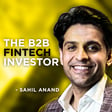
The Unitization Revolution: How P. Venkatesh(Maveric Systems) Explains Fintech's Biggest Trend
How did P. Venkatesh build Maveric Systems into a $75 million banking technology powerhouse without VC funding over 25 years?
In this episode, we explore the contrarian strategies behind one of India's most successful bootstrap stories in fintech.
P. Venkatesh, Director of Maveric Systems, shares the remarkable journey of building a domain-focused banking technology specialist that now serves global top-10 banks across 15 countries. From starting as a testing company in 2000 to becoming a comprehensive BankTech solutions provider, PV reveals the strategic decisions that enabled sustainable growth in the competitive IT services landscape. He discusses the concept of "unitization" - how technology democratizes access to complex financial instruments, the evolution of universal banking, and why AI will make banks more human rather than less. PV also shares candid insights on customer selection philosophy, the importance of vertical specialization over horizontal scaling, and why services businesses can be more defensible than SaaS products in complex domains.
He shared this wisdom in a candid conversation with host Akshay Datt, exploring how Maveric is positioning for an IPO while navigating the AI transformation sweeping through banking technology. This episode offers invaluable lessons for entrepreneurs building B2B services companies, understanding banking industry trends, and creating sustainable competitive advantages through deep domain expertise.
Key Highlights:
👉How P. Venkatesh built Maveric Systems from testing startup to $75M ARR without VC funding over 25 years
👉The "unitization" framework explaining how technology democratizes access to complex financial systems
👉Why AI adoption in banking follows a predictable spectrum from technology companies to ISVs to traditional banks
👉Strategic lessons on choosing customer quality over revenue quantity for sustainable B2B growth
👉Maveric's vertical specialization strategy in banking technology and its competitive advantages
👉The future of banking technology, DeFi adoption, and why banks will remain financial gatekeepers
#BankingTechnology #BootstrapStartup #BankTechSolutions #AIInBanking #FintechIndia #StartupGrowthStrategy #B2BServices #BankingTransformation #ITServicesIndia #FinancialTechnology #DomainSpecialization #CustomerQualityStrategy #BankingAI #FounderThesisPodcast #IndianEntrepreneurs #TechStartupsIndia
